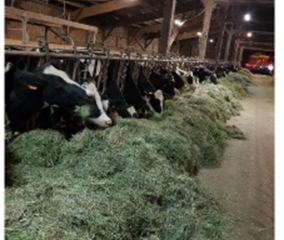The immigration of Dutch farmers to Luxembourg
(original german
title : « Die Einwanderung holländischer Bauern nach Luxemburg »)
Luxembourg
Introduction
Why could wooden sabots be found in Luxembourg farms during the 1950s, even though they are common footwear from the Netherlands? A thematic exhibition has been developed with LEADER support, answering this question and explaining an almost forgotten part of Luxembourg’s rural history. During the 1950s, about 150 families of Dutch farmers migrated to Luxembourg because of a lack of farms and land in the Netherlands and the availability thereof in the Grand Duchy. The Dutch families integrated into the rural society of their new homeland and influenced lastingly Luxembourg farm practices through new methods and seeds they brought along. Their stories, however, remained largely undocumented until now. Moreover, with the gradual decline of the post-World-War-II generation, oral records of the historic Dutch immigration wave in particular risked disappearing forever. The LEADER project supported the necessary source work that gathered the yet undocumented knowledge as well as the conception of the thematic permanent exhibition on the Dutch immigration, enlarging the portfolio of the rural museum in Binsfeld further. The project not only improved the quality of the existing indoor touristic activity but also managed to valorise parts of the cultural heritage of the rural Éislek region to visitors and inhabitants.
Presentation of the project
The project was implemented from 2018 to 2020 in the northern rural heartland of Luxembourg, called Éislek. In a municipality bordering Belgium, Weiswampach, a local museum situated in Binsfeld takes visitors on a journey to the rural life of the past. The LEADER project expanded the museum’s expansive collection with a thematic exhibition titled ‘Klompen in de koestal’ on the history of the immigration of Dutch farmers to Luxembourg. The booming steel industry in southern Luxembourg led to many national farmers migrating to work in the steel mills during the 1950s. As a consequence, many farms in the North were left vacant and land fallow. Simultaneously, population growth in southern Netherlands led to a shortage of farmland, incentivising outmigration of young farmers and their families to Australia, Canada, Indonesia and also to Luxembourg. About 150 families arrived in the Grand Duchy, which can still be witnessed by today’s many family names featuring obvious Dutch roots. However, this important chapter of Luxembourg’s rural history remains barely covered in the national awareness. A great deal of the knowledge about the immigration of Dutch farmers remained undocumented and hidden within individual family biographies. The LEADER project funded the documentation of the history and the conception of an exhibition to answer important questions such as ‘What caused the immigration?’, ‘What did the farmers bring along?’, ‘How did they integrate into the rural society?’, ‘What remains until today?’ and the like, bringing light to this example of successful migration. The material for the exhibition was gathered in many exchanges with Dutch families and an association representing Dutch farmers. Personal stories, documents, tangible and intangible remnants and pictures were collected and valorised within the exhibit to cover different elements of this nearly forgotten part of Luxembourg’s rural history. The exhibition enlarges the offer of the existing rural museum in Binsfeld that informs visitors through its thoughtfully laid out exhibition about everyday life of rural populations in previous times. A separate room has been dedicated to the thematic exhibit, illustrating in different sections the various facets of the Dutch immigration. ‘Klompen in de koestal’ takes the visitor on a journey back to the 1950s, showcasing the situation back then in Luxembourg and in the Netherlands. The reasons for the immigration are illustrated as well as the various necessary preparations of administrative and private nature, problems encountered, different migration waves, the successful integration of the families, the role of religion, the mutual learning about farm practices and the story of following generations until today. The exhibition manages to paint a compelling picture with the help of personal memories and stories and even provides an interactive data bank that traces the origin and destination of families based on their Dutch family names. The documentation of historic knowledge through the interaction with Dutch farming families, the illustration of their personal careers and the conception of an exhibition is a unique approach that has been made possible through LEADER since other funding sources were unavailable to the association.
Emblematic character of the project
Promotion of tourism activities to support regional development presents one of the thematic priorities of the local development strategy of the LEADER Éislek region. By enlarging the museums’ exhibition further, its attractiveness has been increased, leading to an improvement of the quality of indoor bad-weather activities, which lack in regions such as Éislek that have a specialisation on nature-based tourism. Also, in view of the strategy objective to promote the regional identity, the project managed to uncover the important part of the nearly forgotten history of the immigration of Dutch farmers to Luxembourg. Many innovative farm practices were brought along and today’s orientation of the Luxembourg farm sector on milk production has been significantly impacted by the arrival and integration of families from the Netherlands. However, with the post-World-War-II generation becoming older, a lot of the undocumented knowledge was at risk to vanish forever. The descendants of the 150 families that arrived in Luxembourg have long integrated and assimilated, but the rural population of Luxembourg was lastingly impacted by the traditions and practices the families brought along. The exhibition helps to acknowledge and record the past, enables a better understanding of the present and thereby allows shaping the future. Knowledge about this successful example of immigration helps to understand how societies reacted and enables a new perspective on migration trends of today. The project gathered and valorised parts of the unique history of the rural Éislek region, providing an example for other LAGs to engage with their region’s historic specificities with a similar approach, either to strengthen the understanding of regional identities or to enlarge the bandwidth of touristic activities. Ultimately, the project illustrates that with a limited budget but a clear imagination of a project’s objective, a high quality result can be achieved, speaking to several target groups.
Pictures
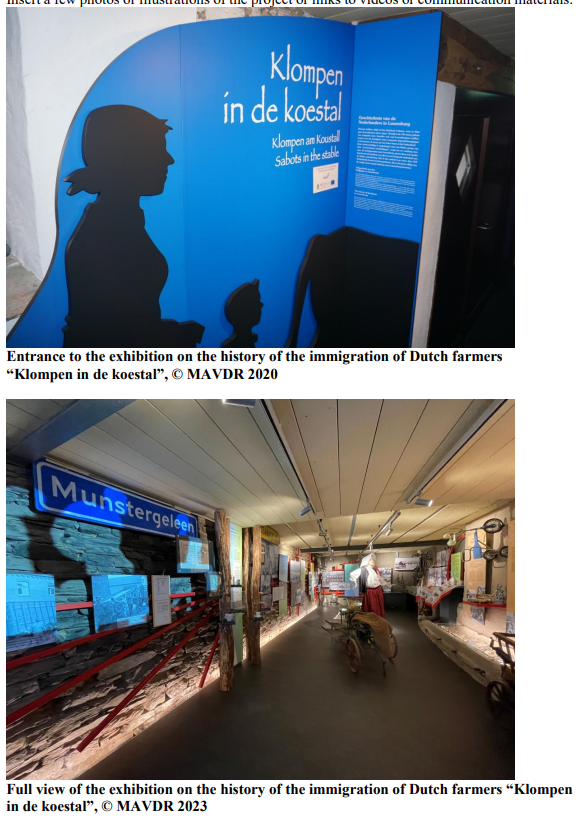
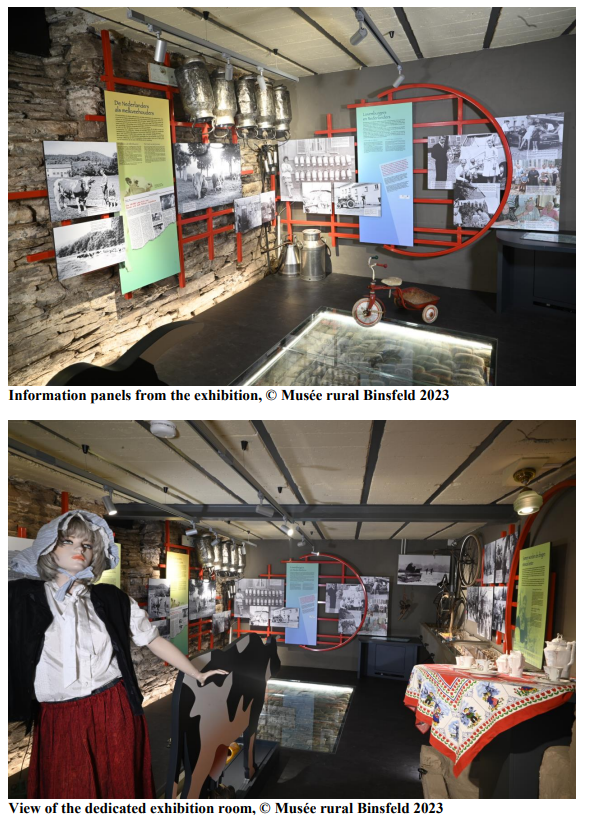
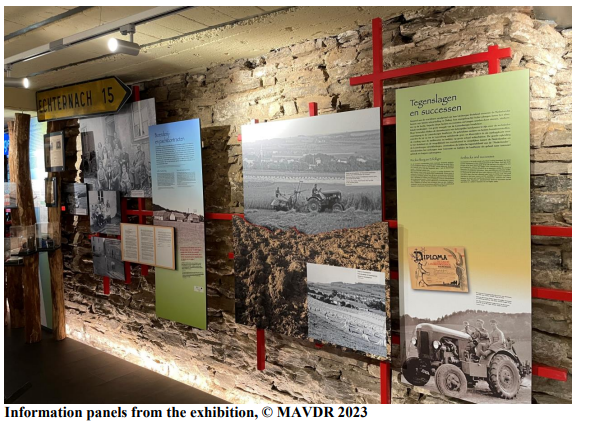
Link to the Museum Website: https://www.museebinsfeld.lu/
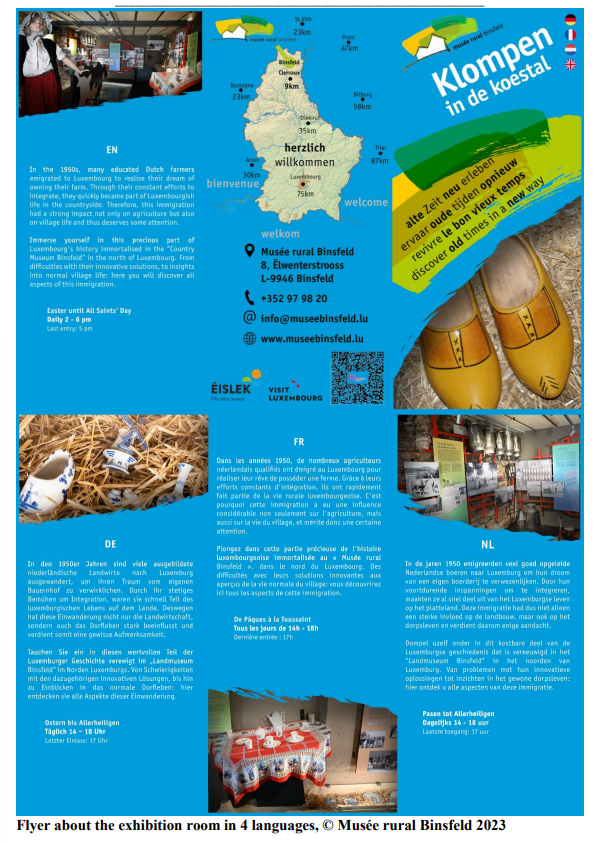
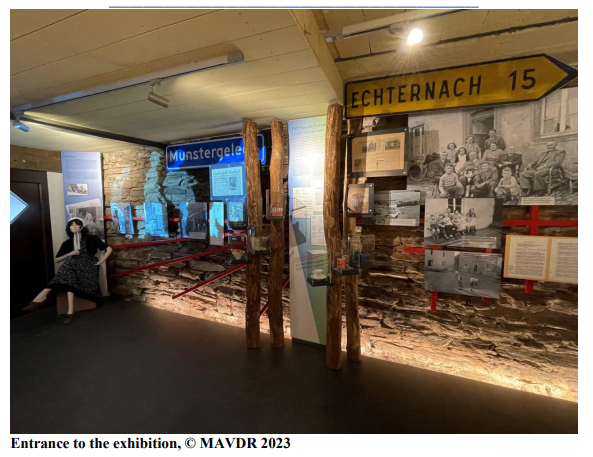
LEADER Éislek
Luxembourg
